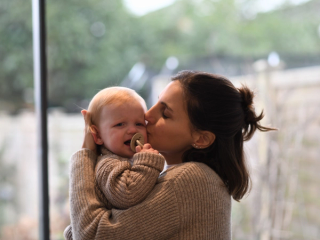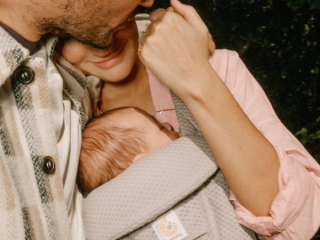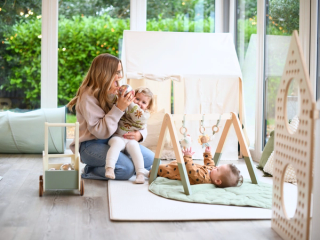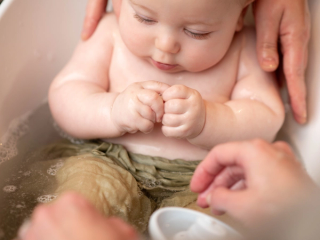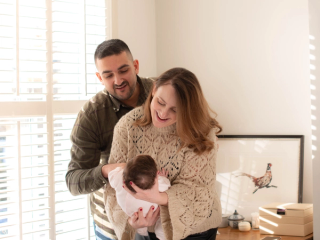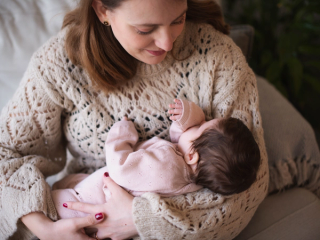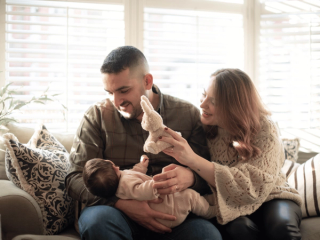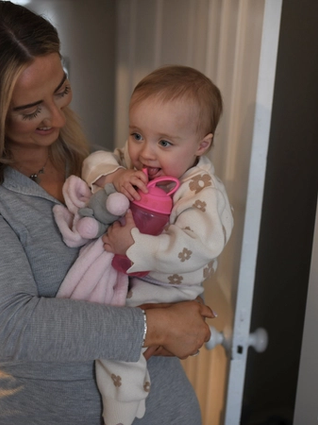
- Home
- Advice Hub
- Newborn
- New Parent Support
- Normal Anatomical Changes After Having A Baby
Normal anatomical changes after having a baby
In the early weeks and months after having a baby there is often an acceptance for how our body feels and looks. You have just made another human being after all! But not all the changes that result from having a baby need to be permanent. And some are common but should not be considered normal. Let’s look at some different areas and separate what’s what.
In the early weeks and months after having a baby there is often an acceptance for how our body feels and looks. You have just made another human being after all! As time goes on, however, it’s easy to get impatient – to worry if what you are seeing or feeling is normal. The truth is our body is different after we have a baby. There is a new normal. But not all the changes that result from having a baby need to be permanent. And some are common but should not be considered normal. Let’s look at some different areas and separate what’s what.
Stretch marks and loose skin
Loose skin and stretch marks are very normal, particularly on your tummy and hip area. If you are sat there wondering why your friend has not a stretch mark in sight whilst your tummy is covered, I want to reassure you that there are many factors out of your control. There is no research to suggest that you could have prevented them.
The biggest factor at play is genetics. We all have different amounts of collagen and elastin in our skin. When there is sudden growth, i.e. pregnancy, and the skin needs to stretch quickly, those with high levels of collagen and elastin can keep up with the rate of growth. For those with lower collagen and elastin stores, however, the skin can’t keep up and so ruptures causing scarring. We can’t remove scars, but they will fade over time and you can also reduce how noticeable they are with scar treatment.
Your downstairs
If you’ve had a vaginal birth, this will usually be an area of more concern. Many women come into my clinic having never even looked at what’s going on down there, for fear it will look like a car crash. It’s never as bad as they imagine. However, if a baby has come through your vagina to get out into the world, there is going to be change. Just look at the size of their head versus the hole! What’s normal depends on the severity of the change and whether the change is causing symptoms.
Let’s start from the outside with vulval changes. If you had a tear requiring stitches, there will be a scar. The severity of the tear and your body’s genetics dictate how noticeable that will be. What’s not normal is if the scar tissue is very lumpy and bumpy, if it causes pain, and if – long after the baby is born – sex is uncomfortable. Another abnormal vulval symptom is a change in sensation. Either you can’t feel much or it’s incredibly sensitive, or even painful to touch.
If we venture to the edge of the cave we can often notice it looks different to pre baby. There’s no way an expanding uterus sits on top of the area for 9 months, followed potentially by the contents of that uterus coming through without causing lasting change. It is normal for the position of your urethral opening (where the wee comes out) to drop lower, meaning it becomes more noticeable. As long as there are no symptoms associated with this, it’s completely normal.
Moving inside the cave you’ll find the vaginal walls. When we are postpartum we are looking at severity, not if change is there. This is because most will have structural change, meaning the vaginal walls are spongier, softer, and laxer. This isn’t of concern on its own. What’s key is doing exercises to strengthen the pelvic floor muscles, which will help give support to the vaginal walls. When these changes are severe and in the presence of related symptoms, we call this pelvic organ prolapse. I have a whole other article on this condition, so have a read if you are concerned.
Your tummy
The tummy has been through quite the journey so far. The organs have been squished, and the muscles have been stretched gradually over 9 months. Then pressure is removed in the single event of birth. Those 9 months of adaptations take time to revert – much longer than most of us realise. The upset to your gut function in the early weeks is very noticeable – from constipation to the runs. It’s important to note that if you’ve had antibiotics, particularly more than one course, it can take your gut time to recover. By half way through your first year postpartum we would expect your gut function to have returned to a predictable pattern for you. If it hasn’t, then you should discuss this with your GP.
Now let’s talk abdominal muscles: they get stretched and weakened; it can’t be prevented. This leads to your tummy being softer, completely normal. Now a lot of the blame is put on the tissue between our muscles, as that gets wider and thinner for everyone. This is referred to as Diastasis, which you may have heard of. Most of us will have that gap reduce back down to within a couple of centimetres by 3 months post partum. However for some the gap remains wider. The width of that gap is much less important than is often portrayed on social media; it’s more about if you can produce tension of whatever gap you have. If the gap is extreme then it can be harder for you to do that, but it isn’t impossible. You often just need some extra support from a physiotherapist.
If you don’t have a wide tummy gap, but the soft belly feeling persists, it is more likely due to the muscles themselves. The muscles have been stretched and got weaker over the course of your pregnancy. A certain amount of progress will be made by the body naturally recovering. After that, you have to work for changes. This is where exercise comes in. We need to give the muscles a reason to want to get stronger by doing exercises to strengthen the whole abdominal wall.
Hopefully that’s put your mind at ease on a couple of things – or maybe given you the nudge to get support! Don’t ever be worried or ashamed about contacting a professional for help with your postpartum body. You deserve a happy, comfortable life feeling your best!
Advice & tips

Want to read more? Join the HiPP BabyClub for full access to this article.
As a BabyClub member, you'll get access to a range of exclusive benefits, including:
Monthly competitions
Discounts from our Partners
Expert advice tailored to your little one's age
Weaning recipes
HiPP shop discounts*
*10% off HiPP's online shop does not apply to our First Infant, Anti-Reflux or Comfort Formula Milk.
Important notice: Breastfeeding is best. Follow on milk should only be used as part of a mixed diet from 6 months. Talk to a healthcare professional.





